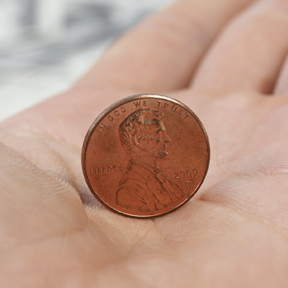November 2025
The penny has been in our pockets for more than 100 years. Now, the little copper coin is rolling out of production. Earlier this year, the U.S. Treasury, following direction from President Trump, announced that it will halt the making of new pennies once the current supply runs out, which is expected by early 2026. The main reason for the directive is cost. It currently costs nearly four cents to mint a single penny, far more than its face value. Countries like Canada, Australia, and New Zealand have already eliminated their lowest-denomination coins with little disruption, and the U.S. is preparing to follow suit.
What this means for you
- Hold onto your pennies: Don’t worry — your pennies are still valid for everyday use, and there’s no requirement to turn in your pennies. They remain legal tender, and their value won’t disappear. You can spend them or deposit them as you always have. But over time, fewer new pennies will be made and fewer will be available in circulation or to withdraw.
- Cash transactions may be rounded: Once pennies become less available, stores may begin rounding cash totals to the nearest nickel (five cents). However, digital and card transactions will remain precise to the cent, so only cash payments will be impacted. Experts estimate rounding will add up to about $6 million a year nationwide. Spread across millions of purchases, that means the difference for any one person is just pennies. Policy discussions are underway to formalize the change and establish consistent rounding rules for cash transactions.
Potential Cost Savings
The U.S. Treasury estimates savings of about $56 million per year from stopping penny production. This change can simplify cash usage and reduce inefficiency.
